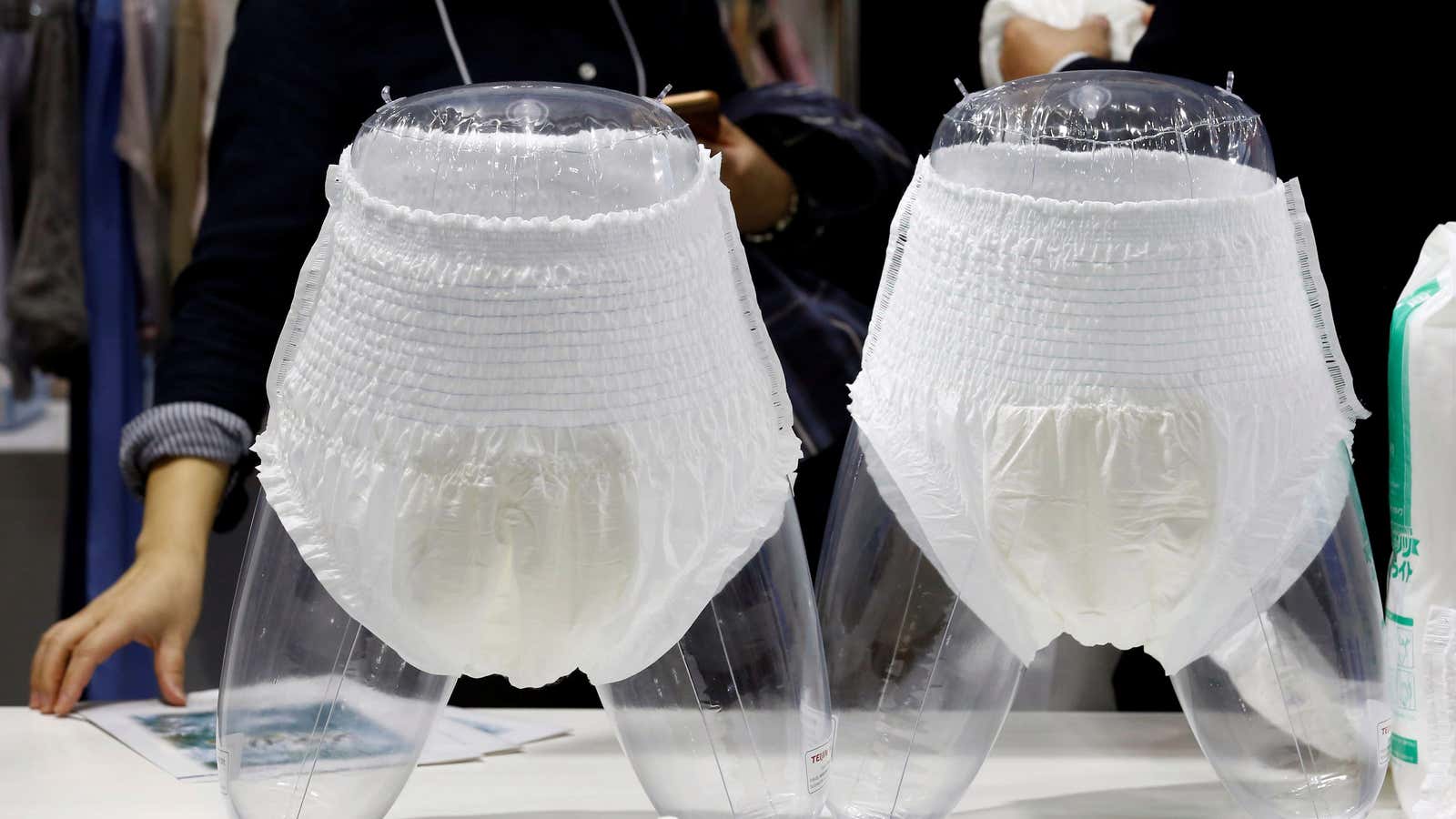Caregivers in Japan could find their workload a lot lighter if the country successfully moves ahead with plans to reinvent the adult diaper.
Japan’s ministry of land and infrastructure devised a road map for the development of the first flushable adult diaper last year, with a prototype possibly becoming a reality this year, according to local media reports (link in Japanese).
“If the plan is realized, the burdens on those working at nursing-care facilities will be reduced,” Masayuki Muraoka, an employee at the land ministry’s sewerage planning division, told the Asahi newspaper. “I’d like it [the diaper-flushing system] to play a role as social infrastructure in a graying society.”
In Japan, the world’s most aged country, products catering to old people are a huge business. According to Bloomberg (paywall), Unicharm, Japan’s biggest maker of diapers, said its sales of adult diapers had surpassed those for babies in 2011. Apart from makers of personal-care products, Japanese paper companies too are expanding their manufacturing facilities for adult diapers to take advantage of the rapidly growing market. Euromonitor, a market-research company, estimated that the size of the “adult incontinence” market in Japan in 2016 was about $1.8 billion, or about 20% of the global adult diaper market that year.
But the increasing use of incontinence products is a huge burden for Japan’s elderly, as well as those that care for them. An employee in the elderly-care industry in Nagoya told the Asahi newspaper that at its care facility, 20 elderly residents typically produce around around three 90-liter (24 gallons) garbage bags full of odorous diapers everyday.
About 80% of the contents of those diapers are liquid, according to Lixil (link in Japanese), a Japanese maker of bathroom fixtures, meaning that separating that waste from the rest of the diaper would significantly reduce the burden on caregivers.
An initial idea by the government ministry to crush used diapers and flush them down special drain pipes was criticized by other members on the diaper research panel, amid concerns over the infrastructural and environmental impact of flushing particles that don’t decompose, according to the Asahi newspaper. As a result, two alternative plans are being considered.
The first involves having a machine separate the diaper from its contents such that only the excrement is flushed while the diaper is discarded in a regular bin. In the other, a machine crushes the used diapers and separates out the crushed excrement to flush. The ministry reportedly believes the first of these two plans to be the most viable.
Some Japanese companies have stepped up to the government’s call for flushable diapers. Lixil said in October (link in Japanese) that it’s developing a diaper-crushing machine with hopes that it can be fully operational by 2021. The land ministry has also reportedly asked Panasonic to develop a prototype of equipment to separate excrement from diapers.
If Japan develops a better adult diaper, there could be a market even outside the country, as populations elsewhere age too. Euromonitor has forecast a 48% increase in adult diaper sales in the US from 2015-2020, compared with 2.6% for baby diapers.
